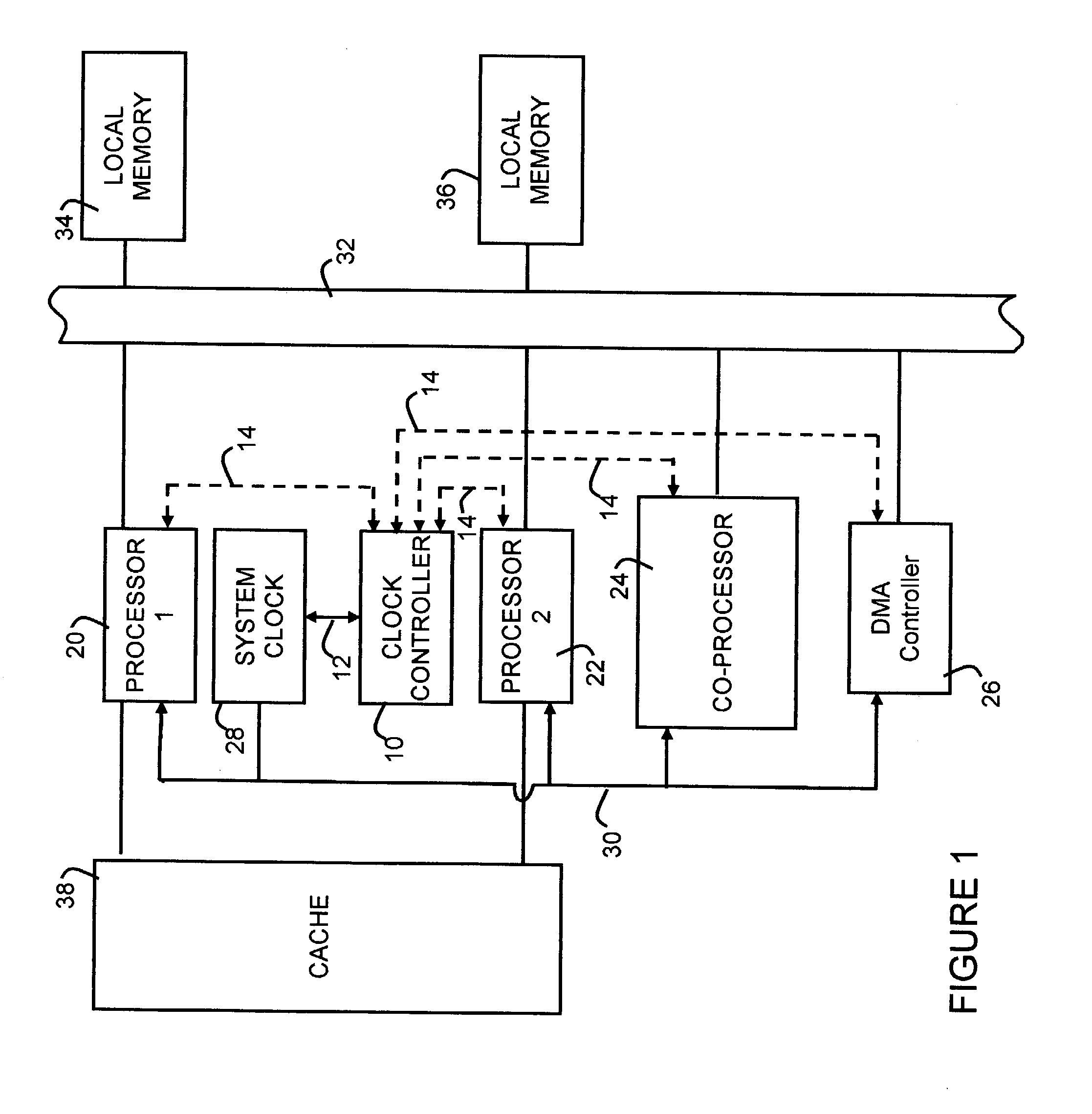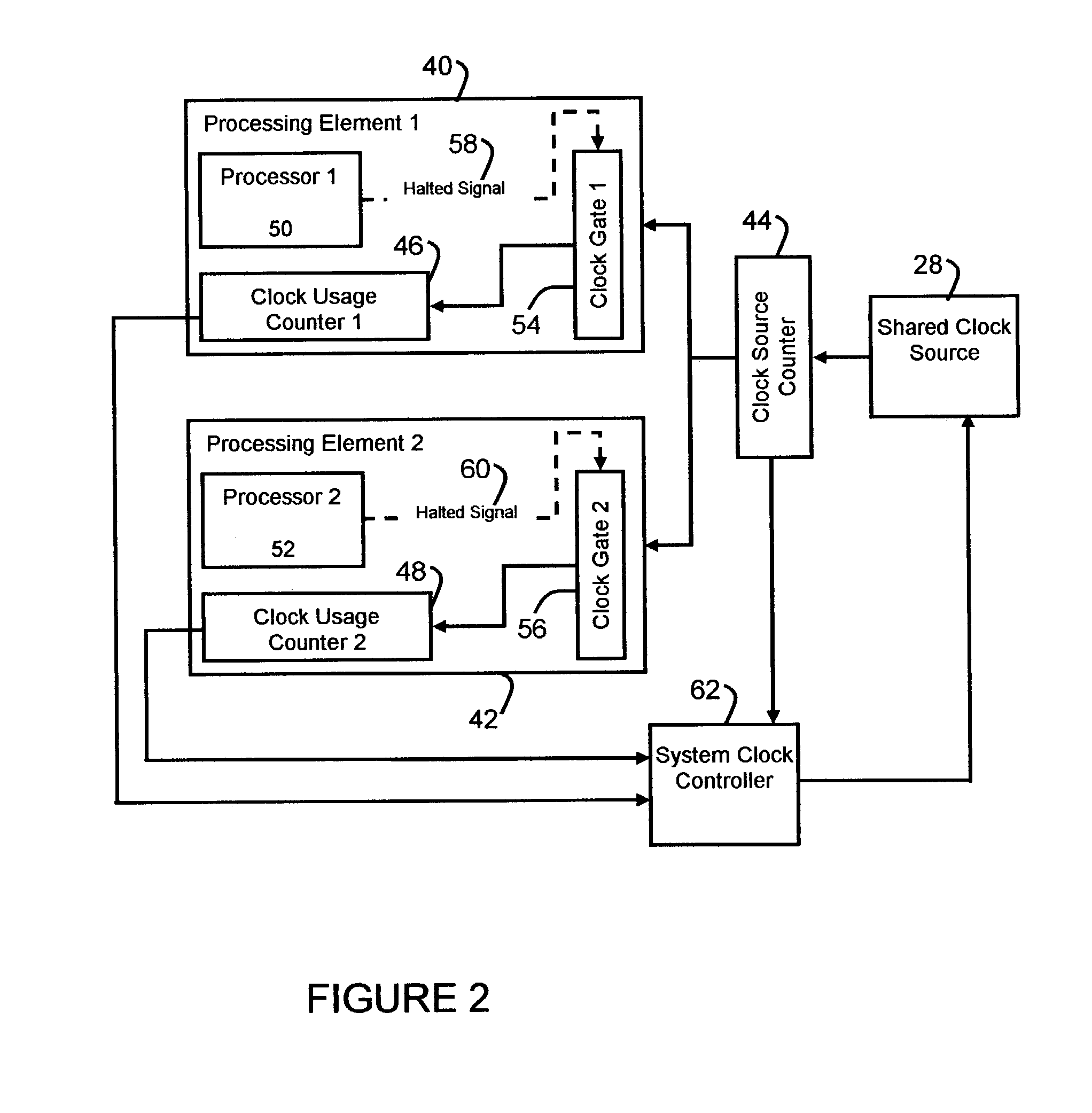System clock power management for chips with multiple processing modules
a technology of power management and chips, applied in sustainable buildings, instruments, high-level techniques, etc., can solve the problems of significant portion of the power used by a particular chip design and may actually be consumed by chip components other than the processor cores
- Summary
- Abstract
- Description
- Claims
- Application Information
AI Technical Summary
Benefits of technology
Problems solved by technology
Method used
Image
Examples
Embodiment Construction
[0021]A detailed description of several example embodiments of the present invention will now be provided. FIG. 1 is a simplified functional diagram illustrating a multiprocessor system in which clock usage by several processors is measured and controlled in accordance with the present invention.
[0022]In FIG. 1, several processors 20, 22, 24 and 26, are shown sharing a system clock 28. In this example, processors 20 and 22 are processor cores; processor 24 is a co-processor; and processor 26 is a DMA controller. These processors are tied to a system bus 32, to which is also connected local memory 34 and 36. Processor cores 20 and 22 also communicate with a cache memory block 38.
[0023]A common system clock signal is supplied to processors 20, 22, 24 and 26 on line 30 from system clock 28.
[0024]Also shown in FIG. 1 is a system clock control 10 that communicates with system clock 28 via path 12, and with each of the processors 20, 22, 24, and 26 via paths 14.
[0025]There are two basic s...
PUM
 Login to View More
Login to View More Abstract
Description
Claims
Application Information
 Login to View More
Login to View More - R&D
- Intellectual Property
- Life Sciences
- Materials
- Tech Scout
- Unparalleled Data Quality
- Higher Quality Content
- 60% Fewer Hallucinations
Browse by: Latest US Patents, China's latest patents, Technical Efficacy Thesaurus, Application Domain, Technology Topic, Popular Technical Reports.
© 2025 PatSnap. All rights reserved.Legal|Privacy policy|Modern Slavery Act Transparency Statement|Sitemap|About US| Contact US: help@patsnap.com



